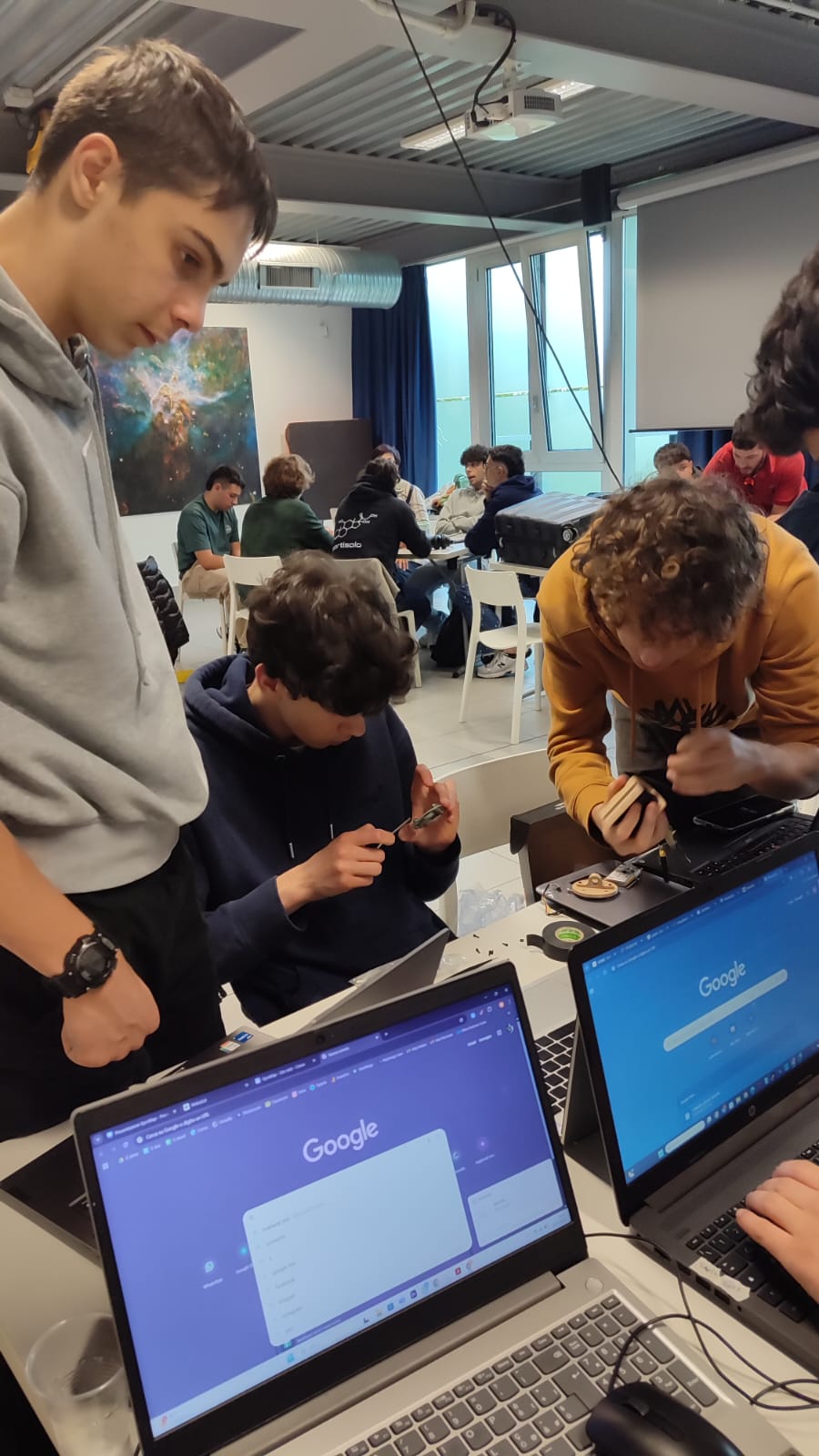🇮🇹 Oggi è andato tutto a rotoli… Come vi abbiamo già raccontato pochi minuti prima della simulazione del lancio abbiamo incominciato a riscontrare dei problemi con il nostro sistema operativo, già sistemato alla meglio durante la notte (infatti abbiamo dovuto praticamente ricostruire tutto l’interno del CanSat). I problemi si sono accumulati e siamo riusciti a risolverne solo alcuni, come quello che costringeva l’ESP32 a resettarsi continuamente. Una volta sistemato abbiamo tristemente scoperto che il BNO aveva smesso di funzionare e l’unica copia che avevamo l’avevamo scordata in hotel, a 1h di bus da Infini.To. Abbiamo quindi deciso di arrangiarci e di provare solamente a trasmettere i dati della missione primaria, che infatti è andata benissimo, tuttavia abbiamo perso moltissimi punti a causa dell’assenza del BNO ma anche del GPS e della microSD, persi mentre provavamo a sistemare l’IMU, dato che i giudici ci avevano proposto di fare una dimostrazione quantomeno della presa dati, tuttavia non abbiamo avuto la possibilità di provare.
Adesso stiamo preparando il nuovo codice per prendere dei dati così da mostrare i calcoli per il nostro progetto e speriamo solo che tutto andrà per il meglio.
🇬🇧 Today everything fell apart... As we have already told you, a few minutes before the launch simulation we started to have some problems with our operating system that we had already fixed during the night (we had to assemble the CanSat again). The problems racked up and we could fix only some of them, like the one that forced the ESP32 to reset constantly. Then we unfortunately discovered that the BNO stopped working and we forgot he only working copy we had at the hotel that Is one hour from Infini.To. So we decided to make do and we tried to just transmit the data of the primary mission and it went well, but we lost a lot of points because of the absence of the BNO but also of the GPS and of the microSD card that we lost while we were trying to fix the IMU, because the judges proposed us to do at least a demonstration of how we would take the data, but we couldn't try to do that. Now we are making the new code to take some data so that we will be able to show out calculations for our project and we only hope that everything will be better from now on.





















